In recent years many software providers have helped to address this concern, helping with eye strain and sleep patterns. F.lux is perhaps the most noteworthy of the bunch, as their application single-handedly brought the topic to the table among techies who have slowly but surely started adopting it years ago.
Major operating systems have also begun building in an option for filtering out blue light, including Windows 10 (with the Fall Creators Update), macOS, Apple iOS, Android, and Amazon's Fire tablets.
Even though the initial impression of the yellow hue effect might shock you, your eyes will ease into the change. Once the colors settle in, you won't want to go back to the regular colors during the night as they difference in eye strain will be significant.
We'll provide brief walkthroughs for some of those operating systems, but F.lux has been around for about a decade now and is available on every major platform (download here). The software uses your location to match the sun cycle in your area, gradually adjusting your display color from 6500K (daylight) to warmer colors with less blue light as nighttime approaches.
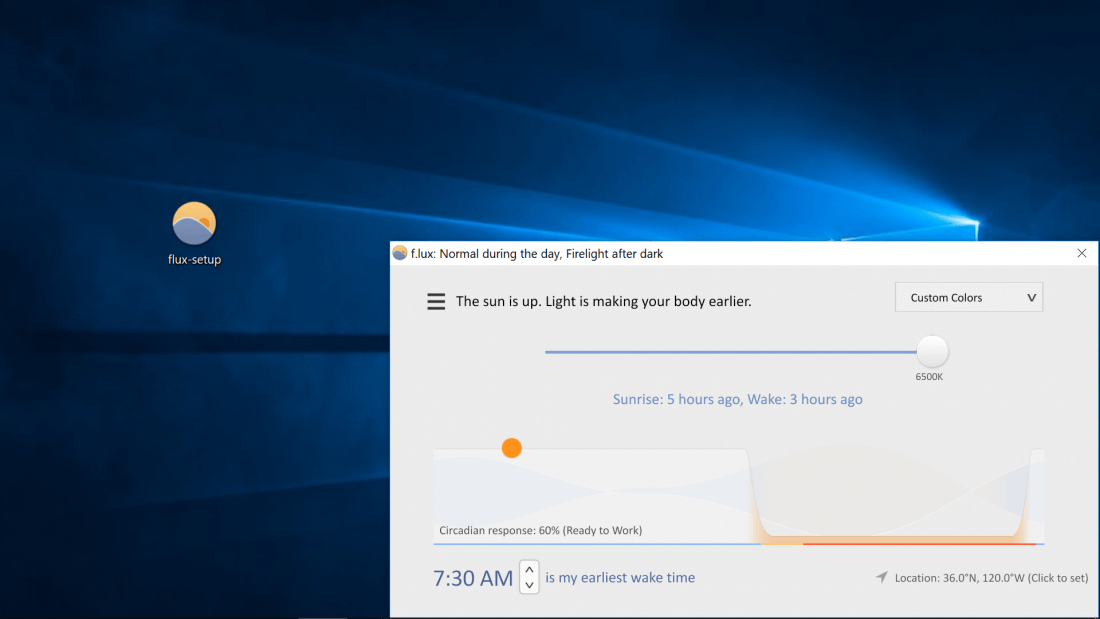
You can also manually change the temperature of your display between eight different colors, 6500K (daylight) being the brightest (blue/white) and 1200K (described as "ember") being the dimmest (orange/yellow).
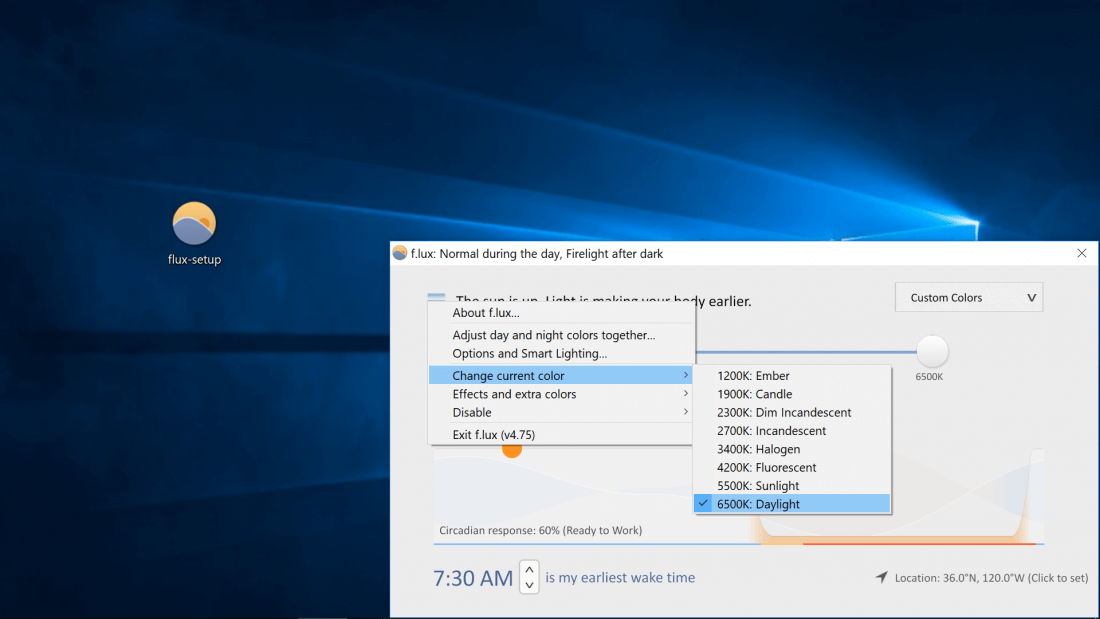
This can be reduced further by using the "Himalayan Salt Lamp" setting found under "Effects and extra colors." Other effects include "Darkroom mode" which makes your background black and text/interface red, "Emerald City" which applies a green tint, and "Soft White" which makes the daylight hue less fatiguing in our opinion, and it can be used in conjunction with the "Reduce Eyestrain" profile option.
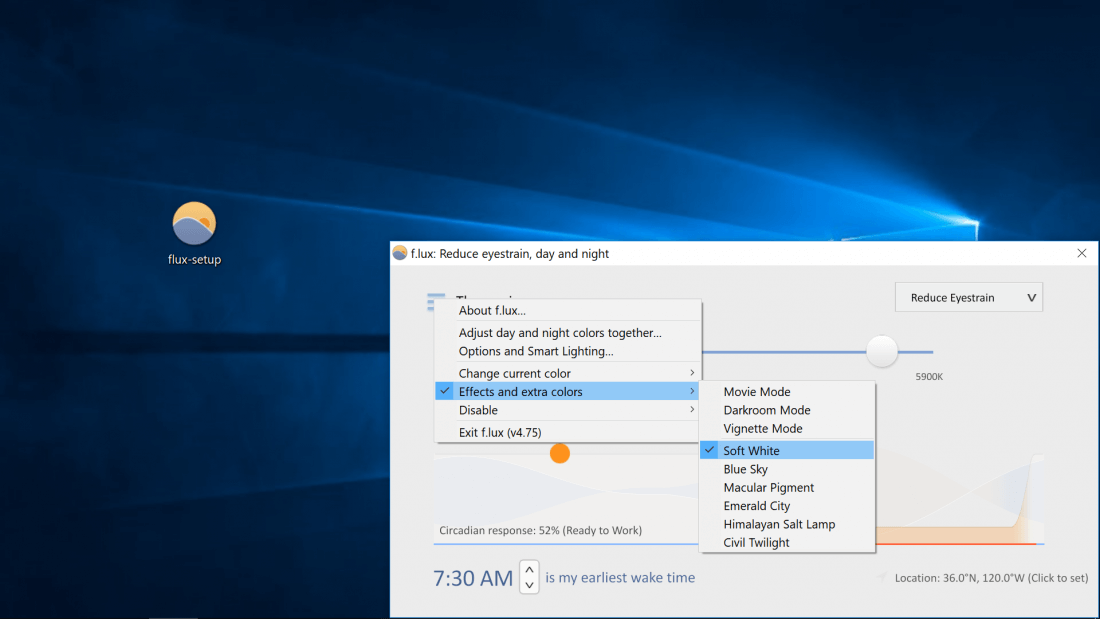
Of note, F.lux can be enabled/disabled with hotkeys and you can set it up so it disables itself automatically when you switch to and from specific applications (say, Photoshop or something where you need the color accuracy).
For those of you with connected lighting systems, the software lists support for Philips Hue, Philips ColorKinetics intelliWhite, YeeLight and LIFX.
Other alternatives to F.lux: SunsetScreen | Iris | Redshift
Folks with the Windows 10 Creators Update can enable the "Night light" feature found in Settings > System > Display, which will automatically apply a similar filter to your display as the sun sets and then remove it at the sun rises.
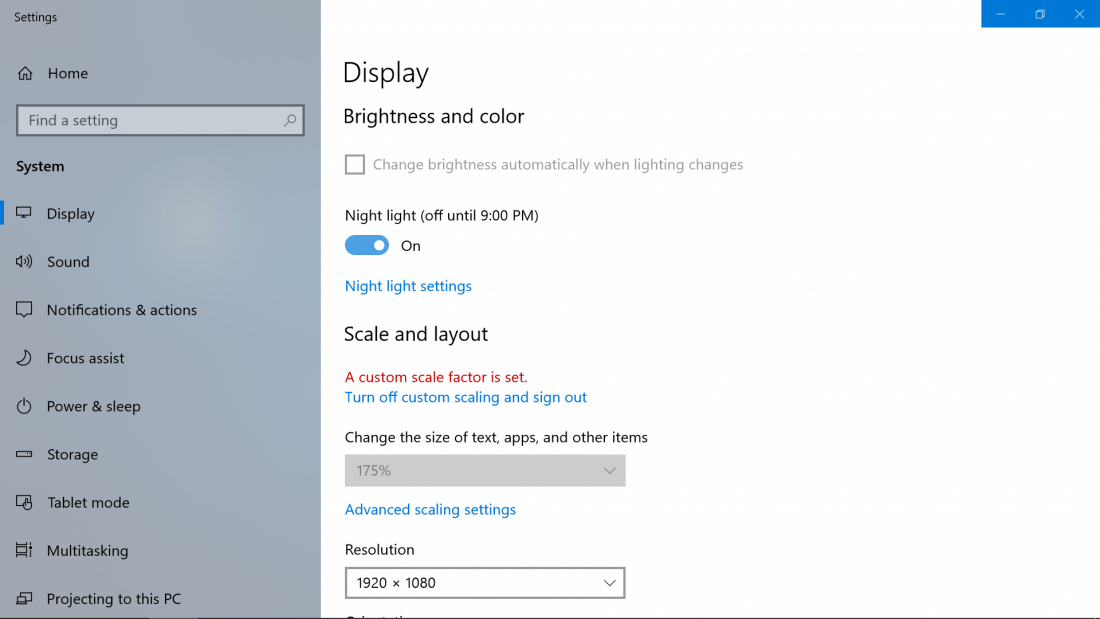
Along with the ability to set custom hours, you can tweak the temperature of the filter with a manual slider in "Night light settings" and the feature can be enabled/disabled without returning to the settings by using the button in the Action Center (beside the Windows clock).
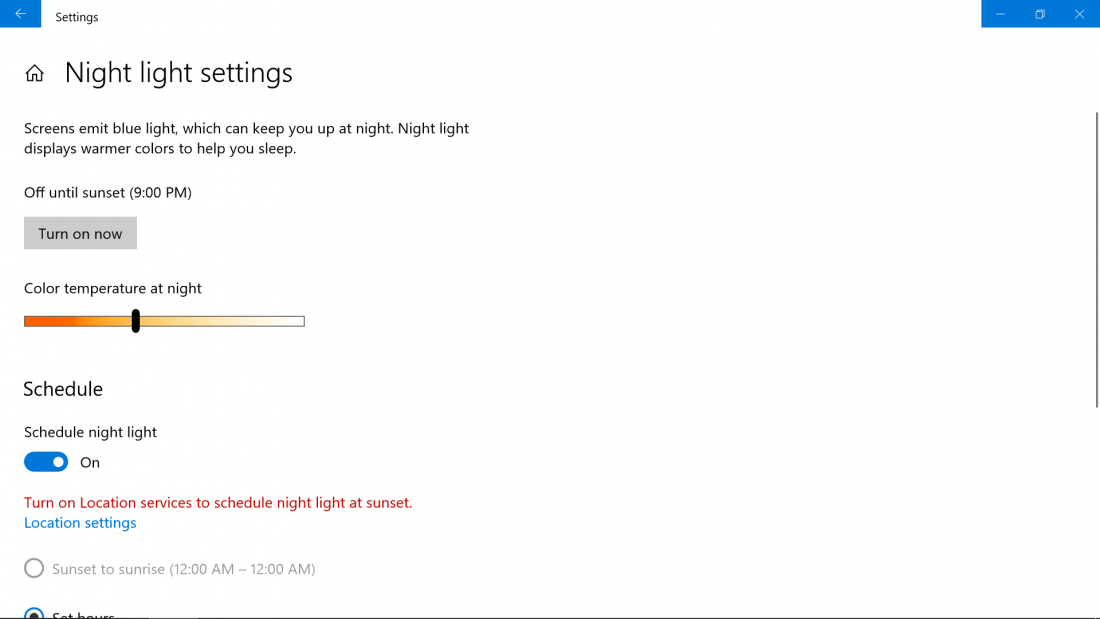
MacOS users from Sierra 10.12.4 onward have an option called "Night Shift" which can be found by navigating to SystemPreferences > Displays > Night Shift (tab)and provides about the same level of functionality as already described for Windows 10.
Night Shift is also available on select iOS devices (iPhone 5s onward, iPod Touch 6G, iPad Air and newer, iPad Mini 2 and newer, and iPad Pro), head to Settings > Display & Brightness > Night Shift.

Android N (or better) provide a "Night Light" feature. The actual name might vary depending on your phone's manufacturer but you should be able to make it out. Head to the Notifications menu >Gear icon > Display > Night Light.
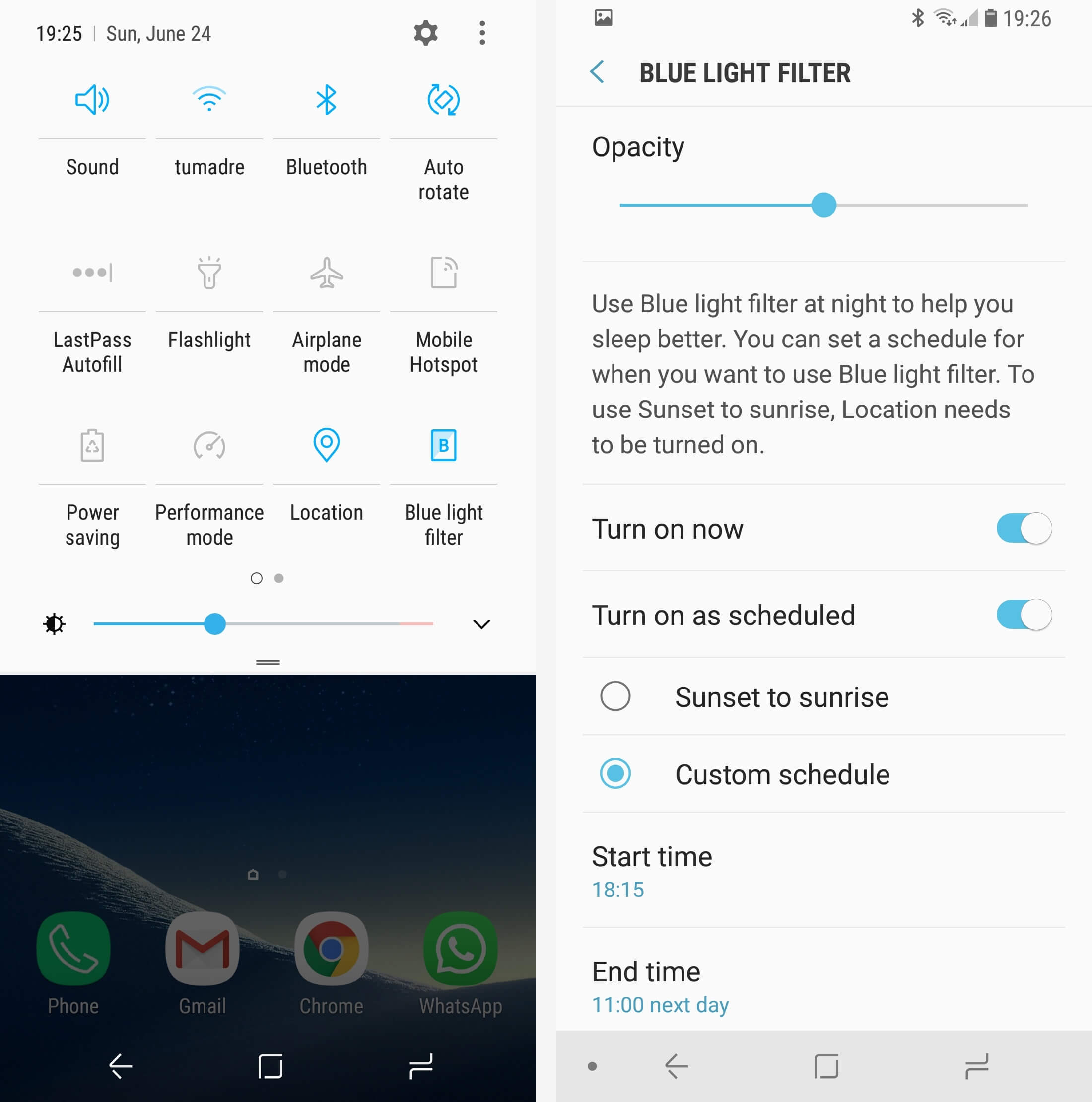
Amazon Fire tablet owners... head to Notifications menu > Settings > Display > Blue Shade.
Masthead photo: Jack Daniel Ocampo Palacios on Unsplash
 Best speaker deal: Save $30 on the JBL Clip 5
Best speaker deal: Save $30 on the JBL Clip 5
 Google's Gemini Live may let you talk to it about your uploaded files
Google's Gemini Live may let you talk to it about your uploaded files
 NYT Connections hints and answers for November 13: Tips to solve 'Connections' #521.
NYT Connections hints and answers for November 13: Tips to solve 'Connections' #521.
 Early Black Friday headphones deals: Save up to 51% on headphones at Walmart
Early Black Friday headphones deals: Save up to 51% on headphones at Walmart
 'Emilia Pérez' review: An incendiary transgender cartel musical
'Emilia Pérez' review: An incendiary transgender cartel musical
 Shop early Black Friday deals on soundbars
Shop early Black Friday deals on soundbars
 Target Black Friday sale 2024: Dates, early deals, and more
Target Black Friday sale 2024: Dates, early deals, and more
 Apple iPhone 17 Pro leaks highlight major new design change
Apple iPhone 17 Pro leaks highlight major new design change
 Best streaming deal: Get the Amazon Fire TV Cube for $99.99
Best streaming deal: Get the Amazon Fire TV Cube for $99.99
 Amazon Black Friday 2024: Official dates, record
Amazon Black Friday 2024: Official dates, record
 Tesla Cybertruck recall: There's been yet another
Tesla Cybertruck recall: There's been yet another
 Arkadium mini crossword answers for November 12
Arkadium mini crossword answers for November 12
 Netherlands vs. Spain 2025 livestream: Watch UEFA Nations League for free
Netherlands vs. Spain 2025 livestream: Watch UEFA Nations League for free
 Man leaked classified Pentagon docs via Discord — now he’s sentenced to 15 years in prison
Man leaked classified Pentagon docs via Discord — now he’s sentenced to 15 years in prison
 Best robot vacuum deal: Save $300 on the roborock Qrevo S Robot
Best robot vacuum deal: Save $300 on the roborock Qrevo S Robot
 Today's Hurdle hints and answers for November 12
Today's Hurdle hints and answers for November 12
 Best robot vacuum deal: Get the Roborock Q5 Max for 53% off at Amazon
Best robot vacuum deal: Get the Roborock Q5 Max for 53% off at Amazon
 Wordle today: The answer and hints for November 14
Wordle today: The answer and hints for November 14
Eternal Friendship: An Unlikely Cold War Connection by Anouk DurandApple's Vision Pro might not launch until March 2024Mother Mold: Keith Edmier’s Frozen FacesSam Altman breaks silence on OpenAI firingEvil, “Venerable,” and Otherwise: An Interview with Barbet SchroederOpenAI names Twitch coApple pauses ads on X / Twitter after Elon Musk endorses antisemitic conspiracyBarney’s Wall: An Evening with Barney Rosset and ‘The Paris Review’Ghost Club: Yeats’s and Dickens’s Secret Society of SpiritsThe Case for Seasonal Sentimentality by Mary Laura PhilpottOur Town: An Interview with Adam Gopnik by Lesley M.M. BlumeWhat's Scarier: Library Fines or Turning Into a Scarecrow?WhatsApp's Meta AI chatbot is now accessible via a new buttonSam Altman and OpenAI: Here's everything you need to know about the dramaBest deals of the day Jan. 23: 17The 'Scott Pilgrim Takes Off' cameos you might have missedLiner Notes: A Way into the Invisible by Renee GladmanThe Objects of Paul Cézanne, CapturedWordle today: The answer and hints for November 18Is Starbucks food actually good? The 10 best tweets of the week The Art of Distance No. 8 by The Paris Review The Art of Distance No. 12 by The Paris Review Americana by Erica Dawson Twitter/X appears to restrict Japanese emergency alert account hours after earthquake Taylor Swift, Miffy, and 4 more icons people searched for on eBay in 2023 The Gimmick of the Novel of Ideas by Sianne Ngai Philip Roth’s Last Laugh by Benjamin Taylor Samsung Galaxy S24 Ultra tipped to have new video feature. How it beats iPhone 15 Pro Max. A Letter to the Professor Whose Name I Carry by Malcolm Tariq Redux: The Heavenly Dolor by The Paris Review Household essentials Amazon deal: Spend $60 and get a $15 credit Machado’s Catalogue of Failures by Margaret Jull Costa and Robin Patterson July 7 by Bernadette Mayer What are dark photons, and why is CERN looking for them? Staff Picks: Brownstones, Ballpoint, and Belonging by The Paris Review More Than Just a Lesbian Love Story by Lucy Scholes American, Indian by Jaswinder Bolina Take an internet break this year Redux: What Kind of Flowers Am I Making by The Paris Review Wordle today: The answer and hints for December 30
2.8103s , 10157.3984375 kb
Copyright © 2025 Powered by 【threesome videos】,Steady Information Network